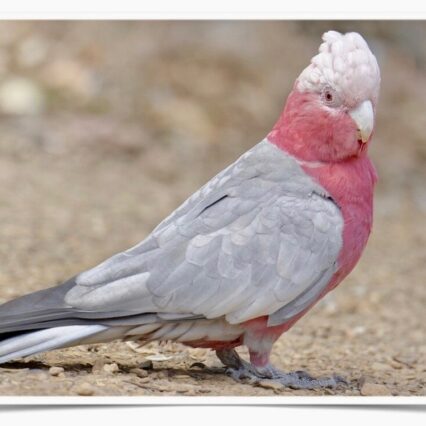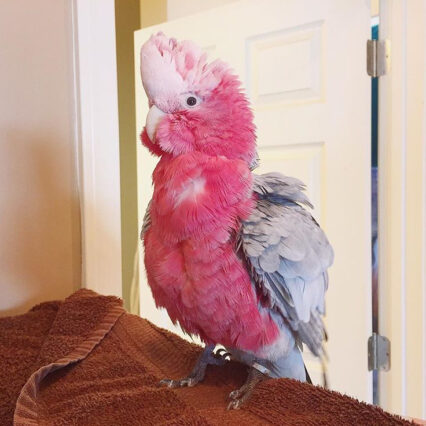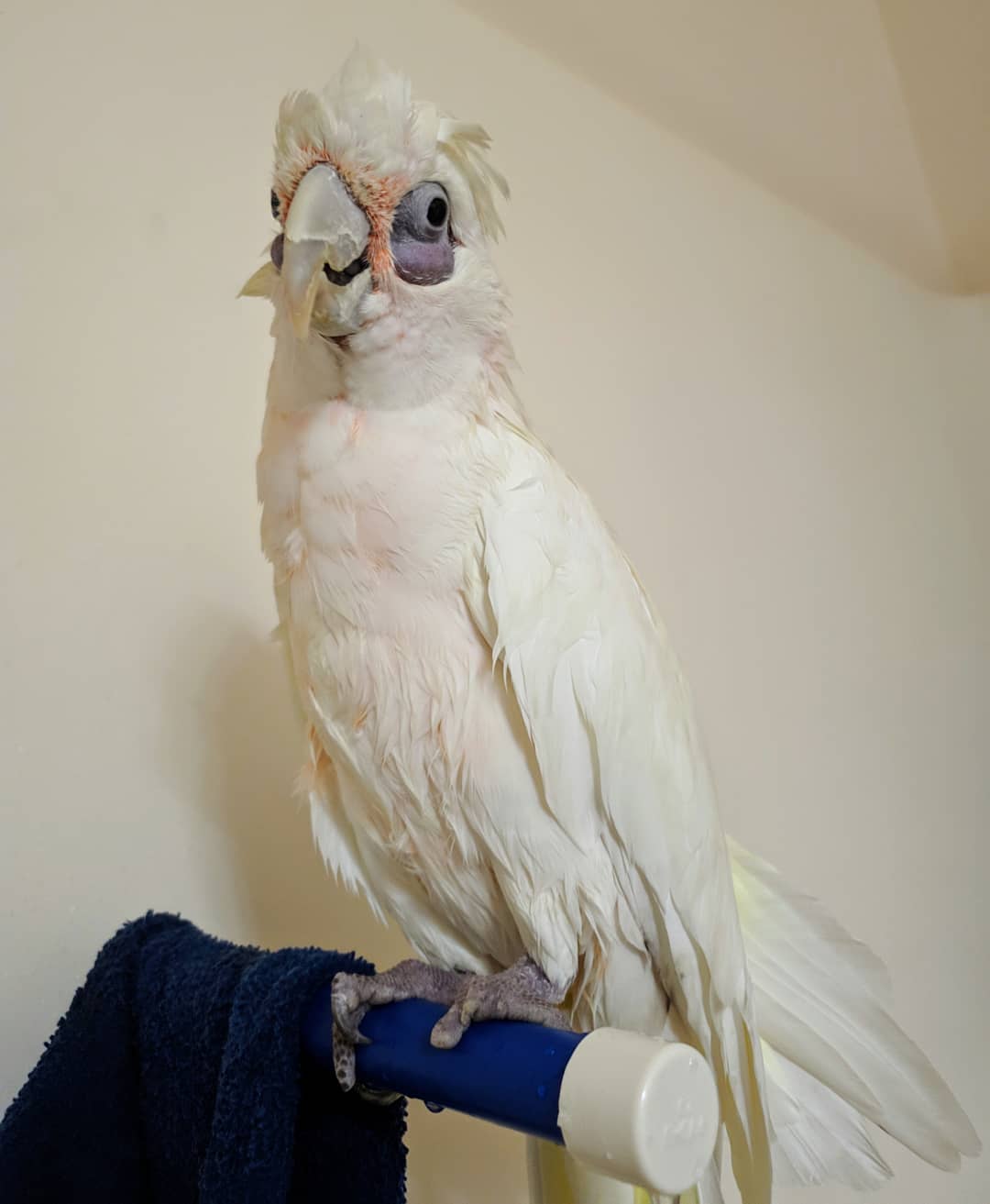Bare-Eyed Cockatoo
Additional information
$790.00
Bare Eyed Cockatoo Overview
The Bare Eyed Cockatoo, also known as the Little Corella (Cacatua sanguinea), is a medium-sized species of cockatoo native to Australia.
Here’s some information about the Bare Eyed Cockatoo:
1. Appearance: Bare Eyed Cockatoos have a predominantly white plumage with a pale pinkish coloration on their chest and underparts. They have a distinctive blue eye-ring, which gives them their name. These cockatoos have a short crest on their head that they can raise and lower. Their beak is grayish-black, and their feet are dark gray.
2. Size: Bare-Eyed Cockatoos measure about 35 to 40 cm (14 to 16 inches) in length and weigh around 400 to 600 grams (14 to 21 ounces).
3. Behavior: Bare Eyed Cockatoos are sociable and highly active birds. They are known for their playful and mischievous nature. These cockatoos are intelligent and require mental stimulation and social interaction to thrive.
4. Vocalization: Bare Eyed Cockatoos are vocal birds and have a wide range of calls and vocalizations. They can be quite noisy, especially during morning and evening hours. They can also mimic sounds and learn to imitate words and phrases, though they are not as proficient at mimicry as some other cockatoo species.
5. Lifespan: With proper care, diet, and veterinary attention, Bare-Eyed Cockatoos can live for 40 to 60 years or even longer in captivity.
6. Diet: In the wild, Bare Eyed Cockatoos feed on a variety of seeds, nuts, fruits, berries, and vegetation. In captivity, their diet should consist of a balanced mix of high-quality cockatoo pellets, fresh fruits, vegetables, and occasional treats like nuts and seeds. It’s important to provide them with a diverse diet to ensure they receive the necessary nutrients.
7. Housing: Bare Eyed Cockatoos require a spacious cage that allows them to move around comfortably and fully extend their wings. They should also have plenty of toys, perches of different sizes, and mental enrichment to keep them stimulated. Regular out-of-cage time for exercise and social interaction is essential for their well-being.
8. Socialization and Training: Bare Eyed Cockatoos are social birds and form strong bonds with their human caretakers. They require regular social interaction, mental stimulation, and positive reinforcement training to prevent boredom and develop a well-behaved companion. Early and consistent training can help establish good behavior and prevent potential behavior problems.
9. Conservation Status: The Bare Eyed Cockatoo is not currently considered a threatened species. However, habitat loss and illegal trapping for the pet trade pose some localized threats to their populations. It is important to ensure that any Bare-Eyed Cockatoos kept as pets are obtained through legal and ethical means.
If you’re considering a Bare Eyed Cockatoo as a pet, be prepared to provide them with a stimulating environment, regular social interaction, and a balanced diet. They are long-lived birds that require a lifelong commitment of care and attention. It’s also recommended to adopt from reputable breeders or consider adopting from rescue organizations to promote responsible pet ownership.
Providing mental stimulation is essential for the well-being of Bare-Eyed Cockatoos.
Here are some ways to provide mental stimulation for these intelligent birds:
1. Enriched Cage Environment: Create an enriched environment within the bird’s cage by providing a variety of toys, perches, and activities. Include different textures, shapes, and colors to encourage exploration and engagement. Rotate toys regularly to keep them fresh and interesting.
2. Foraging Toys and Puzzle Feeders: Use foraging toys and puzzle feeders to provide mental stimulation and mimic natural foraging behaviors. Hide treats or their daily food ration within these toys, encouraging the bird to manipulate and solve puzzles to access the rewards.
3. Training and Trick Learning: Bare-Eyed Cockatoos are intelligent and enjoy learning new things. Teach them simple tricks, commands, or behaviors using positive reinforcement training. This engages their minds and strengthens the bond between you and your bird.
4. Social Interaction: Cockatoos are highly social birds and thrive on social interaction. Spend time with your Bare-Eyed Cockatoo daily, engaging in play, training, talking, or simply being present. They enjoy the companionship and mental stimulation provided by human interaction.
5. Out-of-Cage Time: Allow your Bare-Eyed Cockatoo regular supervised out-of-cage time in a safe and bird-proofed area. This gives them the opportunity to explore, exercise, and interact with their surroundings. Provide toys and activities outside the cage to keep them engaged during this time.
6. Music and Environmental Sounds: Playing soft background music or natural environmental sounds, such as recordings of rainforest or bird sounds, can provide auditory stimulation and create a more enriching environment for your Bare-Eyed Cockatoo.
7. Rotation and Novelty: Introduce new toys, perches, or objects into the bird’s environment regularly to provide novelty and prevent boredom. Rearrange the cage layout occasionally to keep things fresh and interesting.
8. Outings and Socialization: Cockatoos benefit from outings and exposure to different environments. Take your Bare-Eyed Cockatoo for supervised outings in a secure travel carrier or harness, allowing them to experience new sights, sounds, and smells.
9. Problem-Solving Toys: Offer toys that require problem-solving skills, such as puzzles or toys with hidden compartments. These toys challenge their cognitive abilities and provide mental stimulation.
10. Nature and Outdoors: Expose your Bare-Eyed Cockatoo to natural elements as much as possible. Provide access to natural sunlight, fresh air, and visual exposure to the outdoors. This can be achieved through supervised outdoor time in a secure aviary or by placing the cage near a window with a view.
Free Standard Shipping with any online purchase of $50 (merchandise subtotal excludes store pick up items; merchandise subtotal is calculated before sales tax, before gift wrap charges, and after any discounts or coupons). Truck delivery and shipping surcharges on over-sized or extremely heavy items will still apply (these charges are indicated on the appropriate product information pages and will be displayed in the shipping subtotal of your order). Orders typically arrive within 3-6 business days. Items shipped directly from the vendor or to Alaska and Hawaii have longer delivery lead times. This offer does not apply to Alaska, Hawaii, Puerto Rico or Business Direct orders.
Related products
-

Buy Umbrella Cockatoo Online
$4,300.00 -

Buy Rose Breasted Cockatoo Online
$3,750.00 -

Buy Rose Breasted Cockatoo
$650.00 -

BLACK PALM COCKATOO FOR SALE
$7,500.00
for order beore 11:00h!
1000S 8th Avenue, NY!
from verified users


